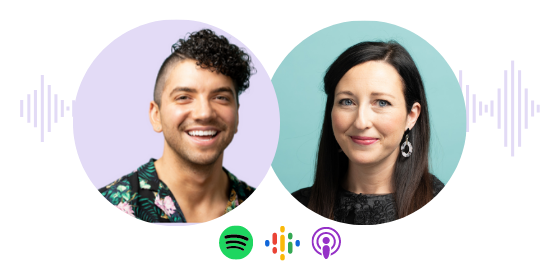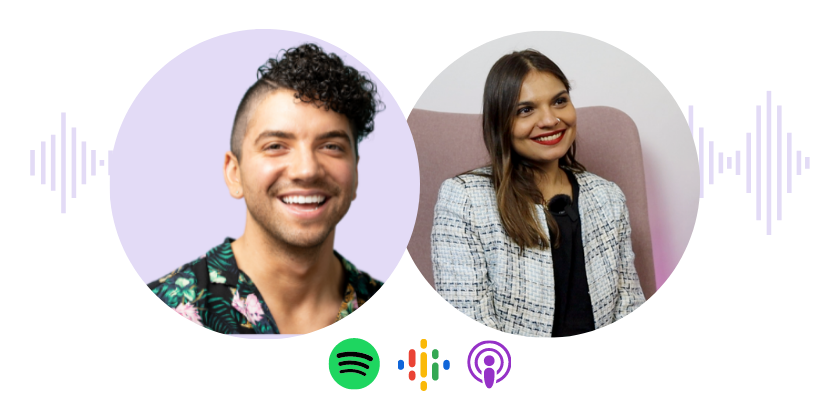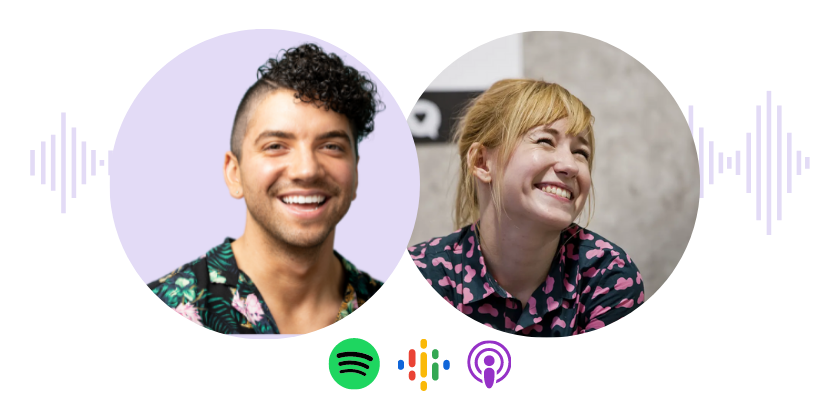Science, so Easy, a Baby Can Do It- with Jenni Vartiainen, PhD
Science could quite literally save the Earth.
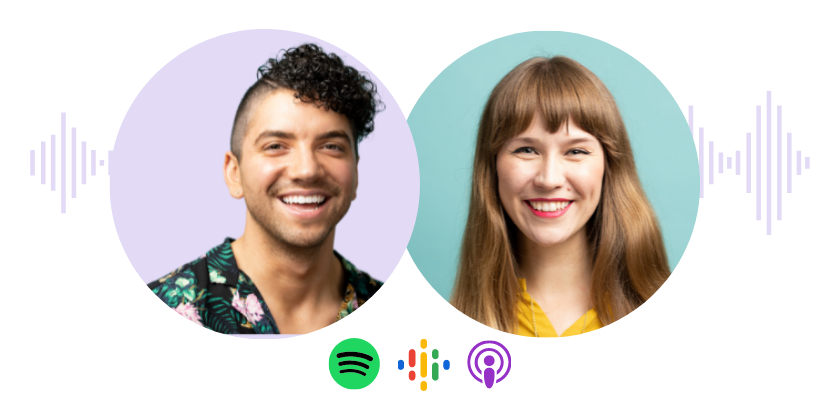
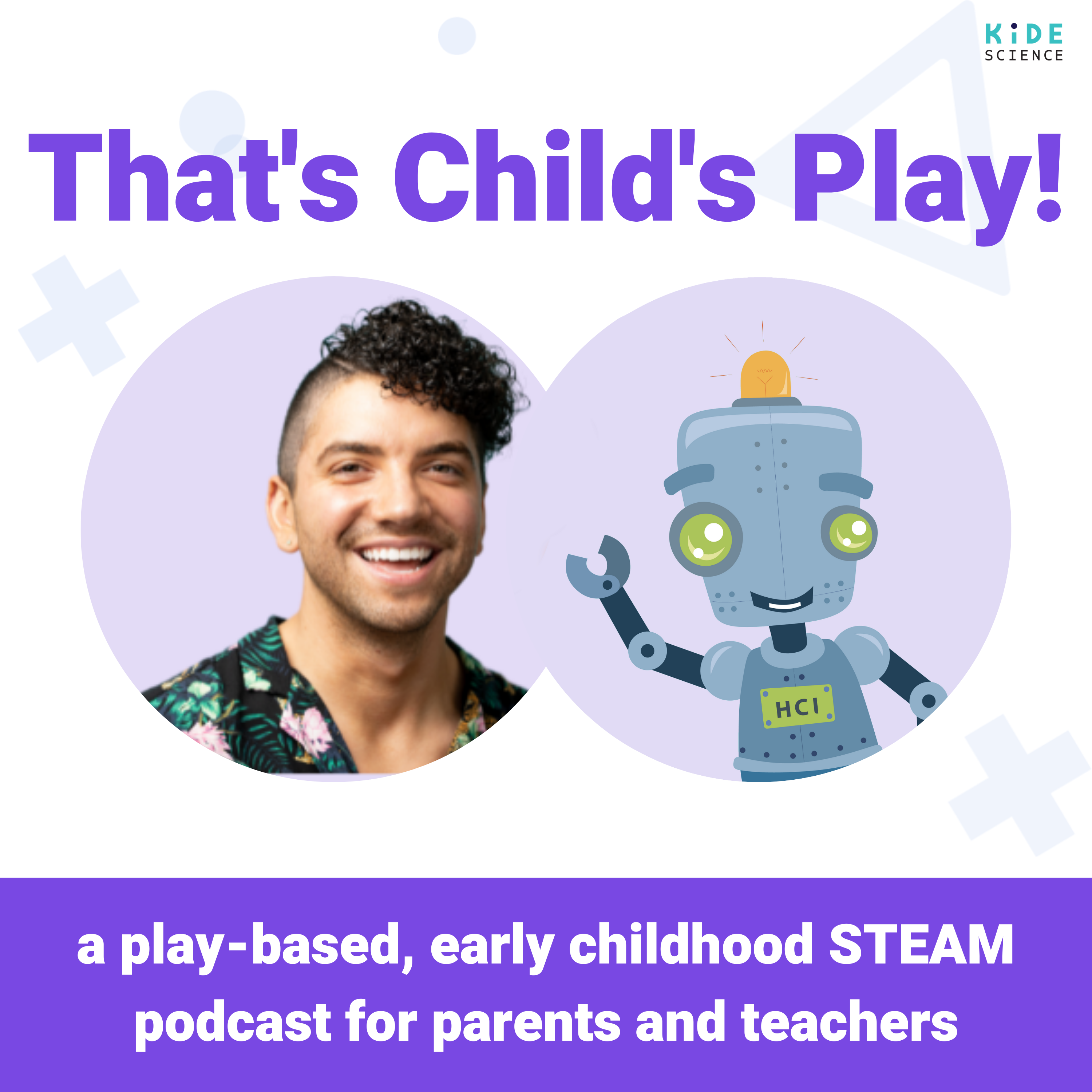
That's Child's Play!
This blog post was published to accompany an episode of Kide Science’s podcast, “That’s Child’s Play!” To hear more about why science education is crucial and get the full conversation with PhD. Jenni Vartiainen, listen to the podcast directly on this page or wherever you listen to your podcasts.
Why Teach Early Science Education?
As educators, we should teach kids about the joys of science.
Think about all of the problems facing the world right now. There's climate change, food insecurity, lack of fresh water resources, and many other issues that affect every person, regardless of geographical location or socioeconomic status. But, how do we tackle these issues? It's as simple as science!
Science could quite literally save the Earth.
Global problems need global solutions, and global solutions require people working together. By teaching science to children, we will create a generation of critical thinkers that are capable of coming up with ideas, thoughts, and methods that can solve these dire issues.
"Critical thinking skills and science processing skills are one of the most vital future skills that we need," says Jenni Virtianen, PhD. "In today's media, for example, in social media, anyone can say anything. So now, more than ever, we need we need the skills to evaluate why a person is saying something. It's a bit forced to say that something is true or false, but we can say, for example, 'hey, most scientists agree on this,' and it's important for people to be able to do that."
It might seem like a long shot to go from playful storytime to science process skills in young children,
but research shows that not only is it possible, it's more useful than traditional classroom learning. "Everything at Kide Science starts with sensory based activities. Adults are there to provide names of the child's observations, and children will even learn science vocabulary during very active observation making situations." Jenni says. In fact, in young children, it's more about teaching children the principles rather than the technical terms.
Jenni clarifies this point by stating "When you start with non-standardized units, children really understand what the basic principle is that they are doing."
Children are masters of play, and really good at roleplay. "Think of when children play as firefighters," says Jenni, "they start acting and thinking as firefighters do. That same concept applies to children playing as scientists. They begin to think as scientists, and with a teacher's help, actually start to develop scientific and critical thinking skills."
This blog post comes from an interview with Jenni Vartiainen on Kide Science's podcast "That's Child's Play!". The transcript and episode can be found below.
Transcript (Generated by AI, so there are some mistakes!):
That's Child's Play Episode 1 - Why Early Science Education?
Antonio Santiago: Can children really learn by playing? Of course they can. Hello everyone. And welcome to the first episode of 'That's Child's Play' brought to you by Kide Science In this podcast, we are going to discuss all things early childhood steam education with a focus on play-based learning. I'm your host, Antonio Santiago.
In today's introductory episode , we thought it would be appropriate to have Kide Science's head researcher and co-founder on to talk about the importance of research backed, play based STEAM education for children without further ado, let's get into it.
Antonio Santiago: You might be thinking, "I know what STEM is, but what does STEAM stand for?" And it stands for science, technology, engineering, art, and mathematics.
Jenni: I'm Jenni Virtiainen I'm a PhD and I work at the university of Helsinki
Antonio Santiago: she's kind of a pro when it comes to STEAM she currently works as a university lecturer for early childhood education and early science education at the university of Helsinki. She's actually a founder of Kide Science. And while this podcast is brought to you by Kide Science, the goal is to be a real use to parents and teachers as a resource for early steam education.
So we will be focusing a lot on the importance of teaching science to kids. In this episode. Kide Science is a company that aims to raise the next generation of critical thinkers. And they do that by encouraging teachers who work in early childhood education to do play based steam education with ready-made stories and lesson plans.
Jenni: Kide Science was kind of a happy accident that happened. I was doing research for my PhD studies and I wanted to understand how we should introduce science to young children, because we knew from the research that existing strategies and existing pedagogies are not working.
So we need New research based models to do science with young children. And I decided to collect my data from science clubs that was easy to do many iterations and test and refine and for five years, me and my team, we conducted research in these science clubs and suddenly these science clubs became a phenomenon.
So everyone wanted t o participate in our science clubs. We were called all over Finland and parents asked can you please come here and organize these science clubs there? And then we started to think about how we can continue this fantastic thing that we have so that it doesn't just end when I'm finishing my PhD.
So then me and these other founder of Kide Science, Aino, decided that we take a leap and test out. What if we, establish a company that starts to take further this model that we have been creating for five years.
Antonio Santiago: And Jenni, can you tell me a little bit about why you decided to start making science clubs for kids?
Jenni: First of all we started designing those because , there was very little science for young children and we knew the state that our planet is in. So we have climate change. We have soon the situation where we don't have enough pure water for all. How do we produce food for all people on earth after 10 years?
So all these critical issues we have those need early science education. When children are young, we can very effectively affect their attitudes. And we need positive attitudes towards nature towards the fact that we want to save the on the earth. So there was huge need to get early science education in kindergartens, but teachers, they didn't know how to do that.
They didn't know. What would be good ways to introduce science for young children? They were afraid of doing science with young children because they thought that they must be experts in science. So we really wanted to create a model where teachers don't need to be masters of science, but they need to be masters of how to interact with young children and we give everything else.
And through that we encourage teachers to do effective science education. So that was one reason why these science clubs and the research was initiated.
Antonio Santiago: So we're starting with some pretty heavy stuff. Uh, Critical thinking skills, being linked to some of the biggest problems humanity faces today. And, um, it makes sense. Global problems need global solutions and for people to want to work together and actually be able to solve these issues. We need lifelong critical thinkers. Let's dive more into that.
Jenni: Critical thinking skills and science process skills are one of the most vital future skills that we need. So in today's media, for example, in social media, anyone can say anything so more than ever, we need to now skills to evaluate why this person is saying that. That person's evidence, for example, what are the references? Where, where does that come from? And by critical thinking, I mean that we must be able to look at something
from different perspectives. It's not negative thinking, but it's ability to see different kinds of viewpoints. And when you are able to understand phenomenon so that you see different viewpoints, you understand why people are saying something, then you can slowly build the idea that what might be.
It's a bit false to say through about something, but something that, for example, scientists agree on. So we need to raise children who can question themselves these very important questions that why are people saying. Something. And also they should be able to understand what is, for example, difference.
If some person says in their blog, something , or someone says something in peer reviewed scientific article, what is the difference between two of those?
Antonio Santiago: And dear listeners, there's probably something that's popping up into your head that also popped up into my head. And that's what kind of science can a three, four or five-year-old do that would actually teach them? And the answer?
Playful science.
Jenni: In the science clubs we wanted to create the learning environments so that children in fact feel that they are inside the play. So we wanted to create an environment where children can take the role of a little scientist and they can play little scientist, take these kind of dramatic roles. And we know from my research and also other research that when children take this kind of roles, they start acting as they think.
That person should act. For example, when children play firefighters, they start acting as they think that firefighters do, and that same applies to scientist. Of course we need teachers to introduce children. What kind of thinking strategies. For example, scientists have, but little by little by this kind of playful roles, we can make children develop scientific thinking skills. And in our Kide Science model also teachers might take the playful role.
So it's also for teachers easier. To do something new, something that might be a bit frightening for them. They are not comfortable maybe doing science education. So if they have some other role than their, teacher role on, it might help them to jump into a science adventure with children. We also use stories a lot. They have three aims in our model. So first stories invite children to enter the imaginary situation so that it really feels imaginary play that they are in the second aim for stories is to motivate children to do different, different kind of inquiries and experiments. So it brings reason for children. Why I'm doing this. We know that if you don't feel meaningful doing something, it's not very fruitful to try to force you to do it. So we want to spark the light in the children so that I want to do this. And the third aim for stories is that we can very effectively scaffold children's learning process by referring back to story and help children develop thinking skills through that.
Antonio Santiago: Oftentimes teachers have a clear power delineation with students, and it's a popular thought that there is a need for sort of strict discipline. So how can teachers play and still keep the role of like, well, a teacher.
Jenni: There are as many models as there are teachers but what Finnish early childhood education curriculum suggests is that there are not that heavy power structures. Of course, we have to bear in mind the responsibilities and safety aspects, but it's very much recommended. That teachers give also space for children and the fact that children behave well, if they understand why they should behave in such way. So it doesn't come. From the idea that you might have punishment. If you do something it's not very effective, but what is effective is that the children are told the reasons , why we expect them to do something or behave in some ways.
And when we can make these Shared rules. And so that children can also have ideas and suggestions. What kind of rules we should have so that everyone is comfortable in the classroom. That is the way we can make children much more engaged in those shared rules.
Antonio Santiago: can you give me a quick rundown of what a play-based lesson looks like?
Jenni: We start with play. So we set up the context for the play and the story brings that scientific question, that starting point for children's inquiry, and experimentation Then children move to experimentation where they try to find out the answer for the initial question.
And when children are experimenting, the teacher can enhance the play environment. Strengthened children's, roles as a scientist, and bring in some imagination driven aspects, but also take care. That children practice, for example, well, skill of making observations or measuring and this kind of important things and the storyline goes so that eventually when children have finished their experimenting. Then they return to the story so that they can interact with those story characters and they can give advice to them, give answers to them. And that also gives children possibility to have a power or what happens in that story? So maybe in the next lesson, the story might change a bit according to children's answers and conclusions.
Antonio Santiago: What does data for children's learning look like.
Jenni: great question. I'm qualitative researcher. So that means I don't. Even try to get some results that can be generalized over a huge population.
I'm interested in phenomena. That happens in interaction. And I want to understand in deep level what happens in interaction, their thinking their their ways of acting. So my way to look at science education and what happens there is basically about how children work together, what they say, what kind of emotions I can see what kind of phrases they say, even what kind of gesture.
Happens in their faces. So I always collect video based data, so that I can have as much information as possible from their interaction situations. And I go through that video data second by second, and I unfold. What happens there. And of course this kind of qualitative research. it is not something you can say that for sure happens somewhere else with some other children.
Of course, there are strong indicators that it might be the similar case, but rather than trying to find this kind of generalized results, I want to understand every single detail that happened. When our intervention is going on.
Antonio Santiago: Jenni, during your research, did you ever have a moment where you thought to yourself? Oh yeah, this is definitely the right way to go with this. Or like where even sparks went off, so to speak.
Jenni: Yes, of course. It was about what children said aloud, but also what children communicated through their body language, for example, and one of the main aims for. This kind of activities that we do are getting children interested in science getting them feel that this is something that belongs to me and of course, science process skills.
So we can see how science process skills develop when we listen to what children, for example, word out if they start wording out many observations, for example, We can see that the skill of making observation is progressing and when their observations become more so called scientific observations, observations that anyone can make.
So then we can see again, another step there and when they start combining different science process skills together. So for example, they word out. Observations, they word out, they making measurements to make the observations more accurate and they might word out some kind of predictions they make from this observing situation.
Then we can see again that their science process skills are developing One example of children showing that they have developed the ability for critical thinking was when we were doing one science experiment with a group of children and. It's very common that we aim to build this kind of situations for children's science activities that children do something in a recipe like manner one, you do this two, you do this three, you do this, but we try to get rid of that idea and try to give children room.
To suggest how we should proceed or do changes to test different kinds of settings. And it was very nice activity where children were inflating balloons with baking soda and vinegar. And in that setting many group of children working together, they started to t est different kind of settings, how they would be able to fill up the balloons.
And it was so interesting to see the interaction between children when they started suggesting to each other that maybe we should do that another way. And maybe if we put first the vinegar and then the baking soda, that might be different kind of setting, so they created their research question kind of by themselves.
They didn't word out it as a question, but there was that wondering I wonder, would that work differently if, if the order is different and then they started thinking about how we do that and they shared the roles, you put the vinegar and I put the baking soda and no. Careful observations, and then they made the observations and then they created
another research question. Okay. If we put the balloon. On this funnel and we use this funnel in a different ways, that kind of activities, also the evidence that there is critical thinking behind it. So they are able to see from different perspectives that one experiment. And that, that was from the research point of view.
Very interesting to me to see how all that working together also took place. Because science is not something you do alone, but you share your ideas and you you kind of co-create the ideas.
Antonio Santiago: So how does a three or four year old learn how to measure something? Are you giving them a ruler and saying, Hey, figure this out, or are you going like, Hey, this is one centimeter. How does that work for such a young child?
Jenni: Everything starts. With sense-based activities. So we can say that first stage that children should first learn about concepts is that they can touch objects, they, they can see what happens if they, for example, push it or they roll it or throw it.
And they collect observations by looking at they collect observations by smelling things, by listening to things. So it's very sense based activities. Then adult is there to give names for children's observations and children will learn some science vocabulary during very active observation making situations.
And , when we do measuring, we start with non-standardized units, so that children really understand what is the basic principle of doing. Measurements. And we can use, for example, children's pinky so that they can measure how many of my pinky goes to, for example, length of that little tree Or a flower or something, and that makes it clear for children. what is the basic principle of doing measurements and slowly when children grow older, we can bring in standardized units.
Antonio Santiago: I'm imagining that you spend a lot of time with children. what's one question that has left you stuck.
Jenni: Oh, there are so many of those. Children have fantastic questions and although I have master in chemistry? I still get many times frozen.
One very nice question that I still think about quite often, that one child asked is can birds fly backwards.
Antonio Santiago: Wow. How did you answer that question?
Jenni: in fact, I, I first said what always should be said. That excellent question. And I honestly said to the child that I have no idea. I, I even have never before thought about that.
And then I suggested that maybe we do now some observations with birds. So when we see birds flying, so can we ever see that some bird is flying backwards? I guess the result was that no, for some reason they very rarely fly backwards, although they can do very showy Shall we circles. And dashes in the air but quite rarely. There is evidence that they fly backwards.
Antonio Santiago: Okay and I heard through the grapevine that Jenni is not a big fan of the names stem, which is science, technology, engineering, and mathematics or steam, which is science, technology, engineering, art, and mathematics. So I asked her what is wrong with these acronyms when discussing science?
Jenni: I don't very much like a words STEM or STEAM because it's somehow narrows the idea and the perspectives. So I'm very into so-called phenomenon based learning. And the idea is very simply put that you have some phenomenon that you want to understand in more depth and you take the viewpoints of every single science that you need to understand that phenomenon. So if we use. Only stem or only steam.
I think it narrows people's thinking. And because every single thing that we have is very complicated and we need different kinds of sciences. We need natural sciences, we need human sciences. We need very different kinds of perspectives to fully understand something. So that is one reason. I'm not a fan of using these concepts, but of course, those are quite, quite widely understood what is meant.
By those. So that's also one reason why we use in Kide Science, that steam approach. And if it, of course, make it more clear what is our main main sciences that we use to make meanings of, of the world?
Antonio Santiago: How'd you get into science.
Jenni: At the very first place? I got interested in science because I have always been very into mystery. So my earliest memories from me solving mysteries come from where, when I have been like five years old and I have just made mysteries in my mind that I try to solve.
And then when I went to school, I realized that math and science are full of mysteries. You can try to figure out and solve those mysteries. And I have been surrounded by very wise teachers so that no one has ever said to me that I wouldn't be able to become a scientist or, or that I'm not allowed to be interested in science.
Also, my family has been one very important supporter. In our family, there is no academic background.. So I was the first person in our whole family to get a university degree,
Antonio Santiago: I'd like to interrupt here to point out that she doesn't just have any university degree. She does have a doctorate.
Jenni: But still they were very supportive when I wanted to solve this science mysteries and they have always respected my willingness to study and, and learn. My teachers have been very good role models as well. I have had female science, teachers, female math teachers who have been very supporting and pushing me towards what has been interesting to me.
Antonio Santiago: What is the kind of research you're doing now?
Jenni: Now, I'm doing research about children's scientific identities and I'm very excited about that because it comes back to the idea of how we can help children understand.
Everyone can be a scientist. Everyone has a possibility to learn scientific thinking skills. Now I'm looking at how children support or diminish. Each other's scientific identities. So we can see when children work together, that they, for some reason, they give
much more value for some other children's ideas and observations and suggestions than for some other children's ideas. So they are kind of deconstructing their scientific identities by for example neglecting their ideas or they don't listen to their observations. And at the same time, some children's ideas, even though they are not.
Maybe that useful or the observations might be a bit funny, but still they get much more value. So I'm very interested to see that interaction between children how they construct or deconstruct each other's scientific identities. And if we understand more, that's kind of dynamics, we can maybe Help the situation go to that direction that every child's scientific identity is supported.
Antonio Santiago: When you're finished with this kind of research, are you finding that pedagological developers, educators, et cetera, are receptive to your ideas?
Jenni: I've had extremely good experiences with pictures and. Also with cities and kindegarten management so that they are very willing to do cooperation. And also I'm very happy that through Kide Science I have been able to see how some kind of the results of my research has translated into the practices that happens in real life, in daily life, in kindergartens.
So I'm very happy to see. How willing teachers are on the other hand to participate in research. And of course, parents also have been very cooperative because we, of course, with young children we need so much permissions and, and the idea that everybody feels that is safe and.
good for children, but yes. I think that the research itself has been very productive and of course, how the results have been taken as a part of daily life.
Antonio Santiago: And Jenni's research has definitely seen some success. Um, Helsinki, kindergarten teachers liked Kide Science so much that it got integrated into every kindergarten classroom in Helsinki.
Jenni: Well with Helsinki, our cooperation started first with only 10 kindergartens and they were piloting. What our program was, and they were seeing how that might fit to their idea of early childhood education. And of course, that was part of research as well.
So we were able to get the data from these kindergartens. Very quickly teachers started to talk to each other. So there were that were not involved in that pilot program and they started. To ask that we want also this program, I've heard that this is something very great. And then, well then city of Helsinki just came to us and said that, is there any possibility we could figure out that all of our kindergartens could be involved?
Antonio Santiago: thank you so much for coming onto the first episode of that's child's play. It was a real pleasure speaking to you.
Jenni: Thank you.
Antonio Santiago: Well folks, we did it that wraps up our first episode. This may have sounded a little bit like an ad for Kide Science and in a way it's more an ad for early childhood education in science. we truly believe in the mission and hope everyone sticks around for the next episodes.
I can't wait to share what we've got in store. There's been so many amazing thought leaders in the education field who have graciously agreed. To join the podcast and you'll be able to listen every other Wednesday for more information about Kide Science, play-based learning or helpful tips and teaching tools.
Take a look at the blog listed in the show notes. In addition to the blog, we have a newsletter where the sign up link is also in the show. All right. Well, I will see you next time and thank you so much for listening to that's.
Child's play. Bye everyone.
